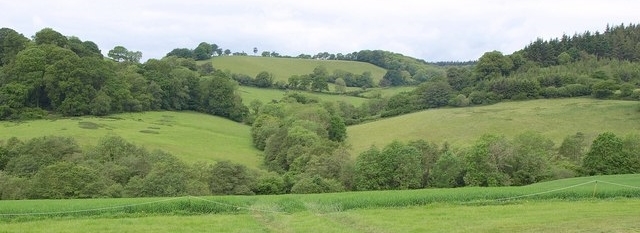“Ancient woodlands are important because they have had time to develop a rich diversity of wildlife and they sequester a large store of carbon in the soil.”
“We’re really pleased that the UK Government [is] finally giving financial support for the natural regeneration of trees, rather than just for planting trees.”
.
The latest from David Attenborough has been stunning:
BBC iPlayer – The Green Planet – Series 1: 5. Human Worlds
And it’s been very inspiring:
Watching David Attenborough’s ‘The Green Planet’? Here Are 6 Ways You Can Help Protect Plants
Including an extraordinary story from Brazil:
It is possible to recover the Atlantic Forest – Instituto Terra — Google Arts & Culture
In this series and in his series last year “A Life on Our Planet”, he talks about regenerating forests:
Just Imagine: Trees Returning | David Attenborough: A Life On Our Planet – YouTube
However, it’s not about just planting lots of trees on open fields, as conservationists will remind us:
We need to be regenerating already-existing woodland and forest:
In May, the U.K. Forestry Commission announced a grant program designed to encourage the creation of new English woodlands as a means of mitigating climate change, boosting biodiversity, and reducing flooding. The program will make 15.9 million pounds ($21.7 million) available in its first year to “provide greater financial incentives for landowners and farmers to plant and manage trees,” according to a statement a Forestry Commission spokesperson provided to Mongabay. But tree planting isn’t the only woodland-creating activity the grant supports: For the first time ever, the British government will also pay landowners for allowing forests to naturally reestablish themselves.
U.K. environmentalists have welcomed the new policy supporting natural regeneration. “We’re really pleased that the UK Government [is] finally giving financial support for the natural regeneration of trees, rather than just for planting trees,” Guy Shrubsole, policy and campaigns coordinator for the NGO Rewilding Britain, told Mongabay.
Beyond tree planting: When to let forests restore themselves
With an example closer to home, at the Knepp estate:
At a former intensive dairy farm in Sussex, England, oak trees now tower up to 20 feet tall (6 metres), sucking in carbon from the atmosphere, providing habitat for birds, mammals and insects, purifying air and water, and protecting land from flooding. Alder, hornbeam, ash and birch trees are also thriving. Twenty years ago, these trees weren’t here at all. The transformation is the kind of story that many countries are aiming for with large-scale tree planting programmes, from India to the US to Ethiopia. But they might be surprised to learn of the secret to this farm’s success – none of these trees were “planted” here at all.
Instead, the trees at Knepp Castle Estate in southern England were allowed to spread naturally. Birds such as jays can disperse as many as 7,500 acorns in four weeks. “Not a single tree was planted, no saplings were bought from commercial nurseries, no tanalised wooden stakes, no polypropylene tubes and plastic ties, no direct financial or carbon costs – no effort,” says Isabella Tree, co-owner of Knepp Castle Estate. The trees’ growth was aided by thorny scrub that had also been allowed to grow at the farm, which acts as “nature’s barbed wire”, protecting the saplings from nibbling deer and the estate’s free-roaming cattle and ponies.
The ‘messy’ alternative to tree-planting – BBC Future
‘Natural regeneration’ can also be done by looking after our ancient trees:
They may make up just one per cent of the world’s tree species, but as it turns out a rare type of ancient tree could be the key to life for forests all over the world. That’s because a new study suggests that old and ancient trees — which are often more than 10 to 20 times older than the average — help to sustain the trees around them by passing down a hardiness and experience in dealing with change. These golden genes radically change the genetic diversity and health of the surrounding trees which arrive later on, researchers say, which helps to stop forests dying out and allows them to thrive for thousands of years.
Ancient trees help to keep forests alive by passing down golden genes | Daily Mail Online
Finally, the Sid Valley doesn’t have many ancient trees, but it does have remnants of ancient woodland which could be ‘regenerated’ – as researched recently:
We think our valley has several areas of ancient woodland, but no ancient trees, with one possible exception. Woodlands are ancient if they have been under tree canopy for more than 400 years. They are important because they have had time to develop a rich diversity of wildlife and they sequester a large store of carbon in the soil. Currently, there are no ancient woodlands listed for the Sid Valley. The valley floor was cleared for agriculture many centuries ago, but the Biodiversity Group is working with the Ancient Woodland Inventory to assess several areas of neglected woodland on the steep valley sides.
Sid Valley Biodiversity Group column on ancient woodlands | Sidmouth Herald
This photo points towards some possible ancient woodland at the head of the Sid Valley:

The Sid Valley © Derek Harper :: Geograph Britain and Ireland